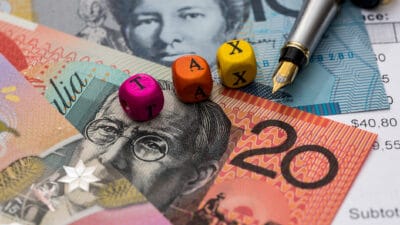BREAKING: Markets suffer biggest fall since…
Well, Friday.
But that must be worth something, right? After all, every time there's a big fall, that's what the headlines tell us about.
No, they don't say "Wow, the markets have been awesome in between".
We don't get "Billions of value added to shares when volatility was low".
No, we all (media consumers and producers alike) focus on the current bad news and benchmark it against the most recent, larger, falls.
Why?
Because we love a car crash.
It plays into our evolutionary biology.
We just can't help ourselves.
But we must.
You know why investing works? Because of the 'in between' times. The ones that don't get the headlines.
The slow, steady, accumulation of wealth.
Of course, we can't just invest in the 'in between' times. We'd have to know, with precision, where the tops and bottoms of market cycles are.
It can't be done.
So, we do the next best thing — invest anyway.
We lose, some, when the market swoons, like now.
We make, a lot more, when the market doesn't.
The stock market has gained around 10%, per annum, for more than a century. On average.
Some days, some months and some years are bad. Some are downright awful.
The 10% average gain includes all of them — and has still delivered astonishing compound wealth.
At 10%, your money doubles about every 7 years, roughly speaking
So $50,000 becomes $100,000 after the first 7.
Then $200,000 after the next 7 years.
Then $400,000.
Then $800,000
Without lifting a finger, or adding a single extra dollar.
But if you add another, say $5,000 a year?
Well after 7 years, it's not $100,000, but $145,000
After the next 7, it's not $200,000, but $329,000
Then $690,000.
Then $1.39 million.
Tell me again why trying to time the market is so superior, as an investment strategy?
Makes those trying to guess daily movements look like they're wasting their time, doesn't it?
There is no such thing as getting rich quick. There's either getting rich slowly, or going broke, fast.
Oh, and in those 28 years, when $50,000 became almost $1.4 million (aided by regular contributions)?
You reckon there's no alarming headlines about financial crises, health crises, wars or famines?
There sure has been in the last 28. And in the 28 before that.
Share markets can — and will — be volatile. Invest anyway.
Yesterday, I sat down with Margie to chat about how I'm thinking about the current state of the market.
Have a look:
Taking a long term view
Speaking of which, here's how I'm thinking about what I'm buying.
Right now, everything looks scary, right?
Prices are falling, and we don't know how far, or for long.
Which makes it hard to contemplate buying.
But let's think about that for a minute.
Three months ago, you were paying $36 a share for a company earning $2 in profit last year, for a P/E of 18 times.
Now, those shares are selling for $20.
Sure, that $2 is probably also at risk…. THIS year.
Maybe even next year.
But in 2023 or 2025?
I mean, if the business isn't at risk of being permanently, structurally damaged?
Let's say that in December, you thought 2025 earnings might be $3 a share.
At the time, you were paying 12 times 2025 earnings.
Now? You could pick up shares for less than 7 times.
Let's look at it another way: If share prices (and pandemics) weren't quoted daily, and you had the chance to buy the very same company for 7 times 2025 earnings that you liked enough at 12 times only three months ago…
Kinda puts things in perspective, right?
Yes, there's risk of permanent damage. And, for some companies with too much debt, there's risk of total collapse.
But if you can satisfy yourself that they can make it through the turbulence?
Why wouldn't you buy?
Fool on!








